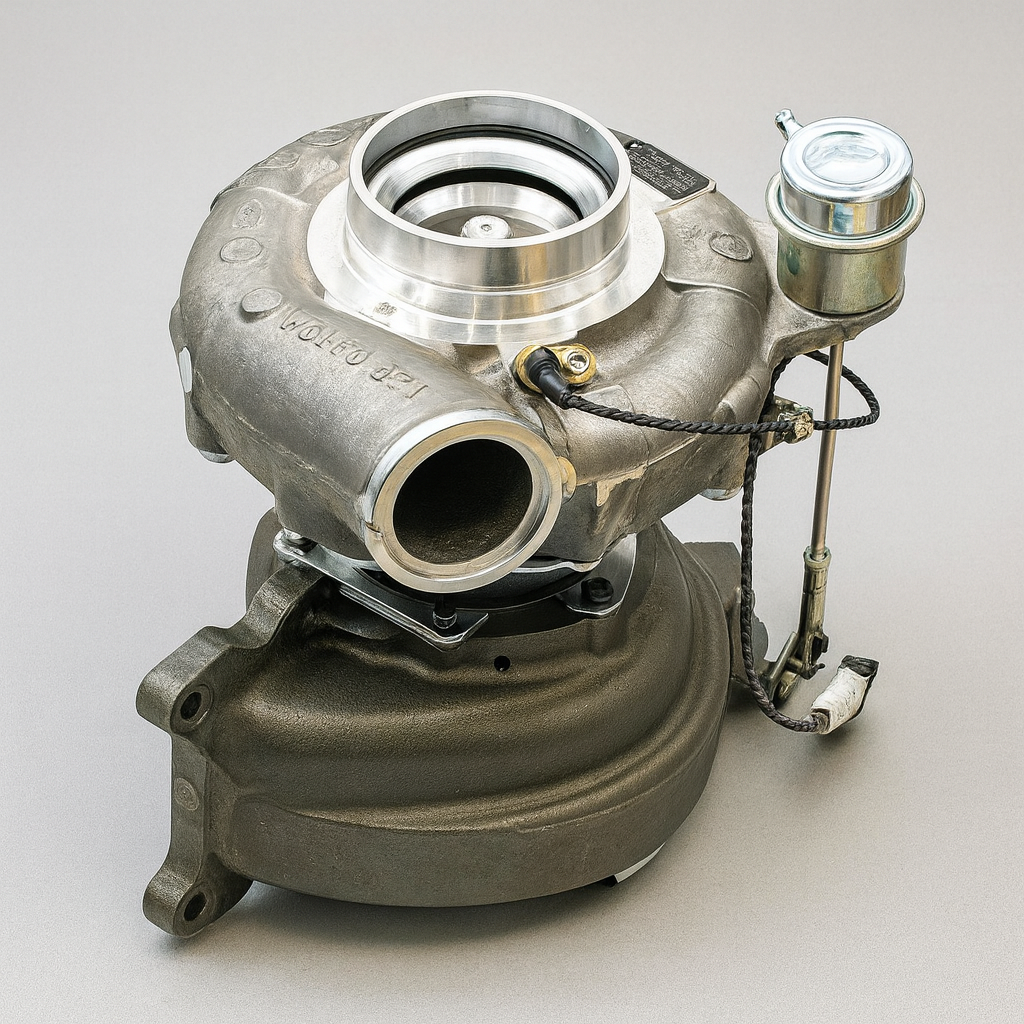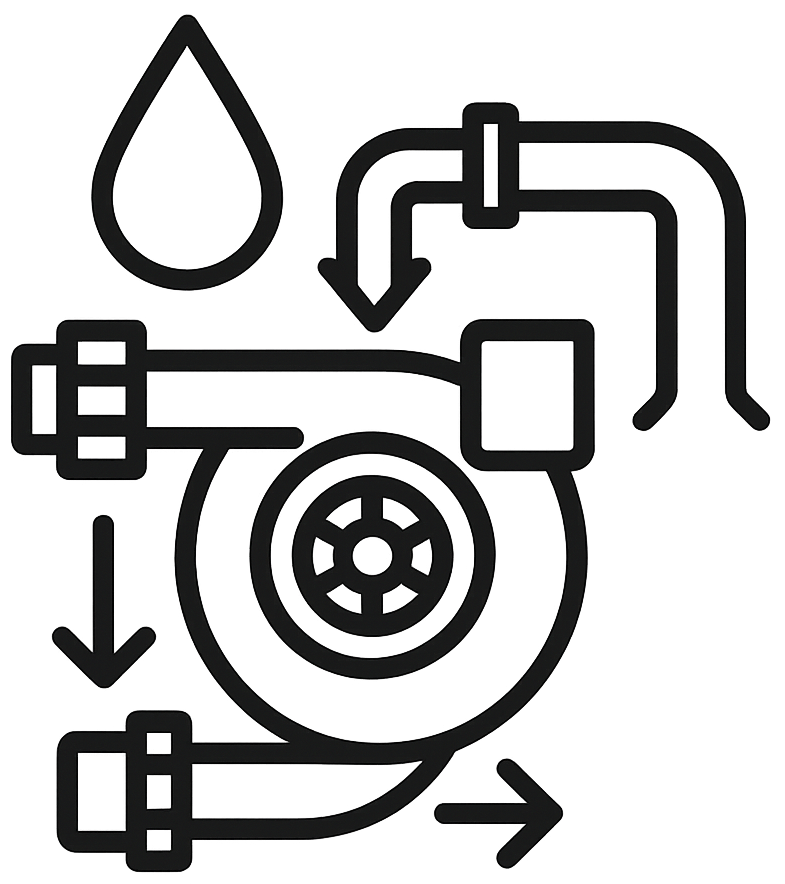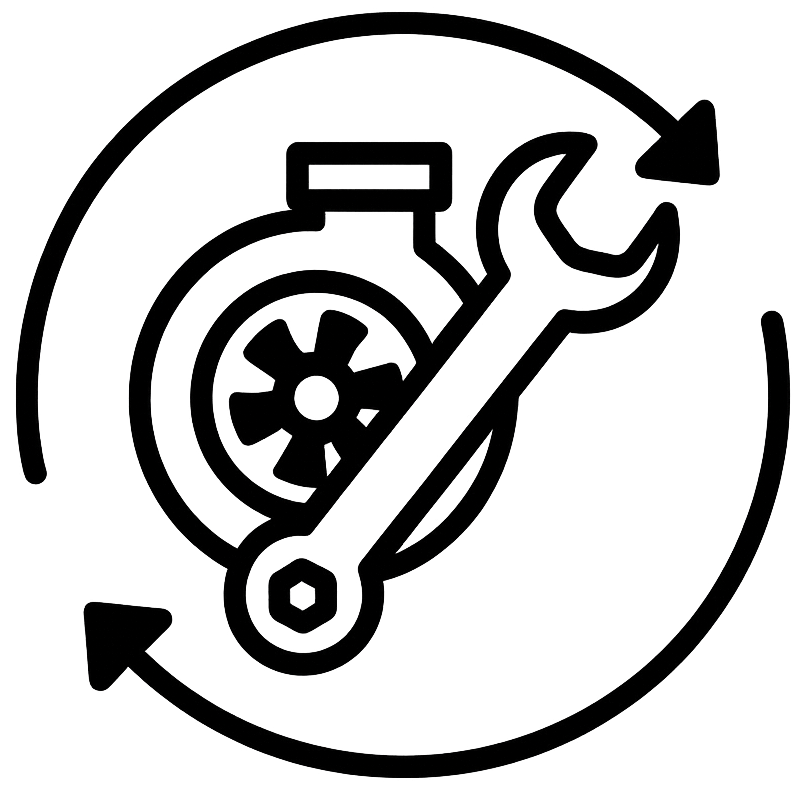
Turbocharger repairs
Your turbo is the engine’s air pump. It shoves more air in so you get power without wasting fuel. When the turbo or piping leaks, power drops and heat climbs. That hurts MPG and can damage the DPF.
Watch for these signs. Slower pull on hills. More smoke than normal. A new whistle or a scratchy grind. Oil mist in the charge pipes. High exhaust temps. More frequent regens. If you see a couple of these, come in before it snowballs.
How we find the problem. We scan the truck and look at live boost and temp numbers. We smoke-test the charge-air system to spot cracks, loose clamps, or a weak cooler. We check shaft play and vane movement. Then we confirm clean oil feed and return, and test the actuator if equipped. You get a simple report with the cause and the fix.
How we fix it. If the unit is saveable, we install a new center section, seals, and gaskets. We clean VGT parts, calibrate the actuator, and fix the root cause so it stays fixed. If it’s cooked, we quote a quality reman or new turbo, prime the oil system, and road test under load. We work on Volvo D13 VGT and Cummins ISX or X15. Do oil and filters on time, fix boost leaks early, and let the engine idle a minute after a hard pull to keep the turbo healthy.
Turbocharger Repairs

Road Test And Data Scan
We drive it under load, pull active and stored codes, and watch boost, MAP, EBP, and temps. Spool time, smoke, and noises tell us where to dig.

Boost And Smoke Test
We pressure and smoke test the charge air path to find split boots, loose clamps, or a weak cooler. Any leak kills boost and raises EGTs.

Oil Supply And Drain Checks
We confirm clean oil feed, correct restrictors, and a free drain. We check for metal and coking. Starved oil will cook a good turbo.

VGT Actuator And Sensors
We test and calibrate the actuator, then verify MAP, MAF, and EBP sensors read right. Bad signals or stuck vanes make the turbo lazy.

CHRA Repair Or Full Replacement
If saveable, we install a new center section, seals, and gaskets and clean the vanes. If wheels or housing are worn, we quote a quality reman or new unit and prime the oil system.

Final Calibrations And Road Test
We reset learned values where supported and run a loaded road test. You leave with tight pipes, clean data, and boost that builds fast.
Turbo Service. What You Should Know
What’s Included in Turbo Service
Road test under load. We scan the ECM, Watch boost, MAP, EBP, temps, and spool time to set a baseline.
Pressure and smoke test the charge-air system to find split boots, loose clamps, and weak coolers.
Confirm clean feed, proper restrictor, and free drain. Inspect for coking and metal so the new turbo lives.
Test and calibrate the actuator. Clean vanes. Replace the CHRA or install a quality reman or new unit when needed.
When You Should Bring It In
Lazy pull on hills. Boost builds late. Surging or hunting. Don’t wait for it to fail.
Black or blue smoke. Whistle turns harsh or starts to grind. Any change is a clue.
Oil mist in charge pipes. Boots that keep slipping. Visible cracks or soot at joints.
High EGTs. Frequent regens. These often point to boost leaks or a sticking VGT.
Why It Matters
Fixing leaks and oil feed issues prevents cooked turbos, melted boots, and clogged filters.
Sealed pipes and a healthy turbo bring clean spool, lower temps, and better fuel economy.
Root-cause repairs stop the same problem from taking out the turbo again.
Catching issues early beats tow bills and full replacements. Clear options and pricing.
